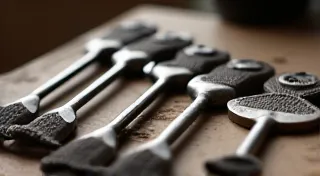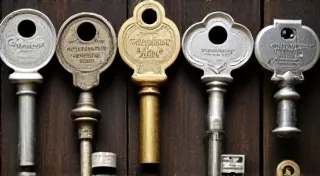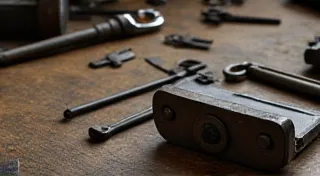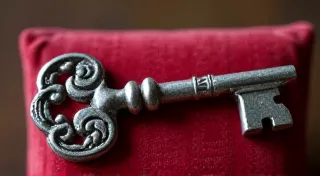The Evolution of Key Shapes & Designs
The humble key. We use them every day, often without a second thought. But for collectors and history enthusiasts, antique keys are more than just tools – they’re miniature works of art, offering a tangible link to the past. This article delves into the fascinating evolution of key shapes and designs, exploring how their forms, materials, and ornamentation shifted over time. Understanding this evolution not only aids in key identification but also reveals a captivating glimpse into the technologies, aesthetics, and social customs of bygone eras. The value these keys hold extends beyond their functional purpose; they represent a slice of history, reflecting the craftsmanship and security concerns of their time. For those looking to start their own collection, understanding these nuances can be especially beneficial, and you might even discover opportunities to find key collecting on a budget and acquire some genuinely fascinating pieces.
Early Keys: Simplicity and Functionality (Pre-17th Century)
The earliest keys were remarkably simple. Initially, they weren't even keys as we know them. Think of the earliest examples found in ancient Egyptian tombs—these were essentially wooden or bone pegs that slid into a slot to open a door. As civilizations advanced, true keys began to appear, typically made of bronze or iron. These early keys were mostly rectangular or slightly tapered, with a single bit (the part that engages with the lock). Decoration was minimal, primarily focusing on ensuring a secure fit and durable construction. The primary function was security, and aesthetics were secondary. The materials used also significantly impacted their lifespan and the social status associated with them. Imagine the importance of securing valuable possessions in a time when security was so rudimentary! The design of these early locks and keys often influenced the overall style of the furniture they guarded, a connection further explored in articles on key’s role in antique furniture.
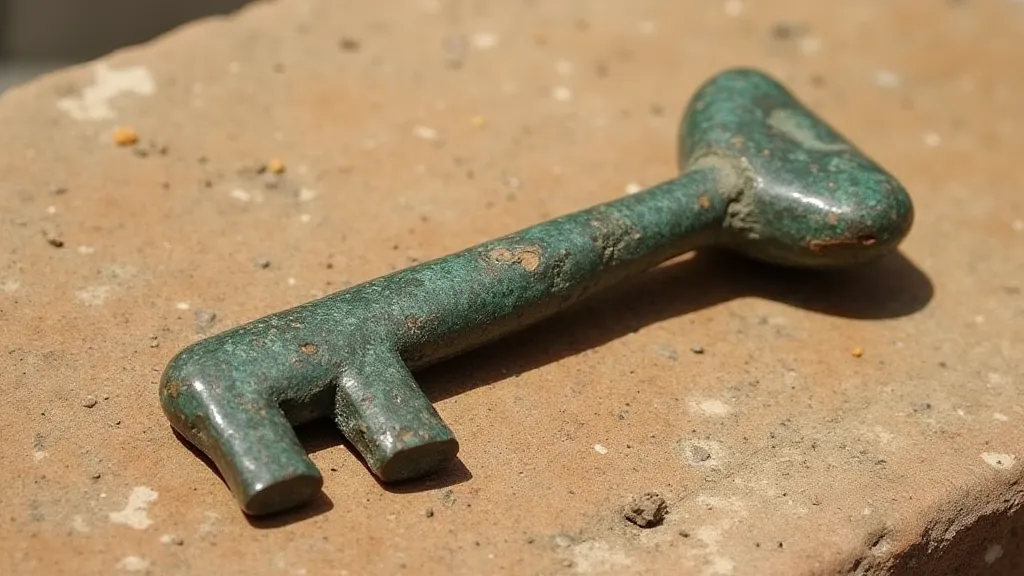
The Renaissance and Baroque Periods: Ornamentation Emerges (16th – 18th Centuries)
The Renaissance marked a significant shift. With a renewed appreciation for art and craftsmanship, keys began to receive more elaborate designs. The barrel (the part of the key you hold) became more ornate, frequently incorporating decorative patterns like foliate designs, scrolls, and even small animal figures. The bit itself became more complex, often featuring multiple wards (obstructions within the key that correspond to specific lock mechanisms). This era saw the rise of the "skeleton key," a long, thin key with a visible hole through its barrel. While seemingly fragile, these keys were relatively secure for their time, though their design facilitated unauthorized duplication. The complexity of these mechanisms also required specialized skill, leading to the emergence of highly-regarded locksmiths whose skills were often passed down through generations. Consider how often these keys would have been seen attached to valuable items, often showcasing the owner’s wealth and status.
The Baroque period continued this trend, with even greater emphasis on elaborate ornamentation. Keys became status symbols, reflecting the wealth and taste of their owners. Materials like brass and pewter became more common, allowing for finer detailing and brighter finishes. Intricate engravings and even small inlays of precious materials (though rare) were occasionally employed. These keys weren’s merely functional; they were statements of refinement and social standing. The craftsmanship involved was considered an art form, and the presence of such detailed keys would have been a clear indication of affluence. The market for these exquisite pieces is surprisingly robust, with opportunities for collectors to find them through various channels, some of which are discussed in articles on key auctions and online marketplaces.
The Industrial Revolution: Standardization and Mass Production (19th Century)
The 19th century brought about a revolution in key design, driven by the Industrial Revolution. Mass production techniques allowed for greater standardization and affordability. While beautiful, ornate keys remained popular among the wealthier classes, the rise of pin tumbler locks led to simpler, more functional key designs. These keys typically featured a shorter barrel and a more standardized bit shape, optimized for the pin tumbler mechanism. The emphasis shifted from individual artistry to efficient manufacturing. The rise of locksmithing guilds and the standardization of lock designs contributed to a more uniform appearance in keys. However, beyond their functional purpose, key aesthetics weren't completely forgotten. Many examples continued to incorporate some level of design, reflecting a continued desire to blend practicality with beauty. The impact on security was also significant, as mass-produced keys inherently posed new challenges in preventing unauthorized access.
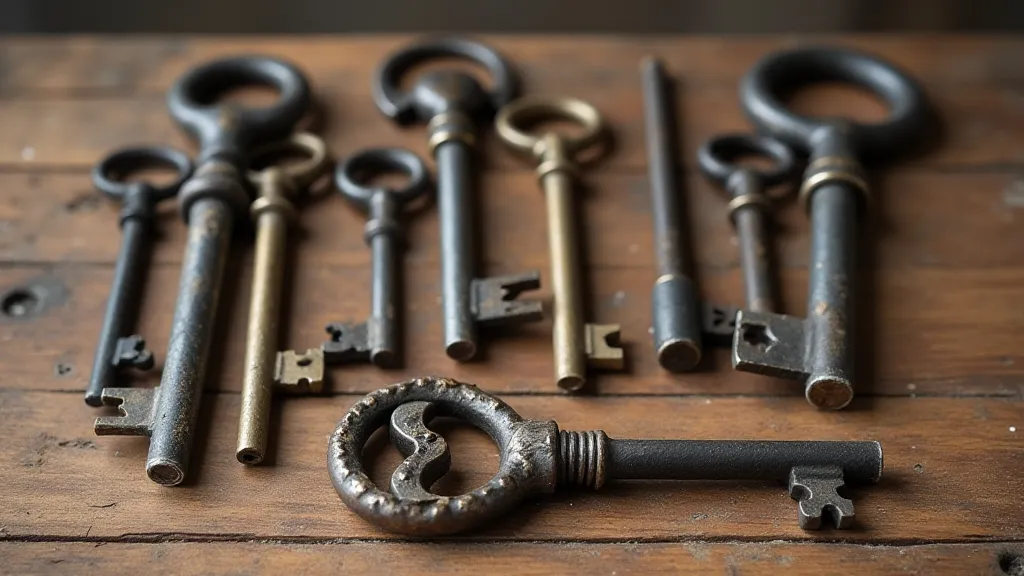
The 20th Century and Beyond: Functionalism and Security
The 20th century saw continued refinement of key designs, driven by advancements in lock technology and security concerns. Keys became increasingly standardized and less decorative. The introduction of double-bitted keys (keys with two bits) and specialized security keys further contributed to a reduction in ornamental features. The increasing complexity of security systems also contributed to the decline in ornate design. Often, the very appearance of a key would signal its level of sophistication. Beyond the keys themselves, the mechanisms they operated often featured innovative designs, impacting the style of associated furniture and architecture. Many people were interested in adding a unique touch to their possessions, and some manufacturers even designed special attachments to personalize these essentials - a tradition explored in more depth through articles discussing the history of key fobs.

The Future of Keys: Technology and Design
The evolution of keys hasn’t stopped with the 20th century. Today, we see a transition towards keyless entry systems, utilizing technologies like RFID and Bluetooth. While traditional keys might seem archaic in the age of digital access, they retain a nostalgic charm and historical significance. The legacy of craftsmanship and artistry embedded in antique keys continues to inspire modern designers, even as we move towards more technologically advanced solutions. The history of key design serves as a microcosm of broader societal changes, reflecting our evolving relationship with security, technology, and aesthetics. It's fascinating to consider how the humble key has mirrored our advancements and anxieties throughout the centuries, and how its role continues to change even as the very definition of a “key” itself is redefined by technological innovation. The blend of historical design and modern functionality provides endless opportunities for continued exploration and appreciation. The influence of these historical designs has subtly impacted many aspects of modern aesthetics, a reminder that even in a rapidly changing world, the echoes of the past resonate in unexpected ways. As technology continues to reshape our lives, the historical significance and beauty of antique keys will only continue to grow.
Conclusion
The evolution of key shapes and designs is a fascinating microcosm of broader historical trends. From the simple tools of ancient civilizations to the intricate artworks of the Renaissance and the functional designs of the Industrial Age, each era has left its mark on the humble key. By understanding this evolution, collectors can not only identify and appreciate these miniature relics of the past but also gain a deeper understanding of the history they represent. The journey of the key – from a basic unlocking device to a status symbol to a tool of security and now a symbol of a rapidly changing technological landscape – is a testament to human ingenuity and our constant quest for innovation.
